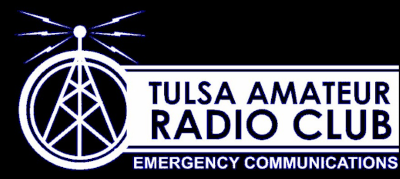Much of the text is from the original 2008 posting
Background
The purpose of this event is a way to offer amateur radio operators a fun way to “Relive the Ride” and their own memories of Route 66, and to celebrate the highway’s 82nd anniversary. This is the Ninth Annual “Route 66 On The Air” Special Event.
Event
For more information about the event, the clean sweep certificate or QSL routes, visit the sponsors website at http://www.w6jbt.org/ . This is a table of contents page, with links to many other pages. Operators should read this page so they know a little about the big picture of the event.
Local News
Route 66 goes right through Tulsa — the original route mins through downtown Claremore. Parts of old 66 coincide with Route 66 between there and Catoosa. At 193″ E. Ave, the route tums south to 1 le: street, then proceeds to downtown Tulsa, jogging onto 10″ Street where it hits the angled part of downtown. At the west end of 10″ Street (near Fire Station #4) it veers southwest, and becomes Southwest Boulevard enroute to Red Fork and then Sapulpa. Old 66 sometimes parallels and sometimes is New Sapulpa Road, then US 66 enroute to Bristow. Some famous landmarks on the old route are the Blue Whale near Catoosa, several of the old “motor lodge” motels along 11″ Street and SW Blvd., Tally’s Café, the Corer Café and others. Some of the people you’!I talk with on the air will have traveled the road and will know of these (and other) landmarks.
Special Events
In general, special events work much like contests, but are more “laid back”. On one hand, there are a lot of people that want to work us, so at times we will encounter pileups and need to work quickly to keep the crowd happy. On the other, it IS NOT a contest, or a race, so if conditions permit, and someone wants to talk, go ahead and ragchew a bit. Don’t be afraid of the pileup — remember, they want to work YOU, so YOU are in control.
Use of the W6L callsign
Logging
If you use electronic logging, whatever you use is fine, just export to ADIF
and send it to me (adSpe@sbcglobal.net) and I’1l merge it in to one master log after the
event ends. If you don’t use a logger, Excel works just fine. And if you don’t have a
computer (or have one but don’t have a spreadsheet program) use a paper log. I’d prefer
not to have paper logs, but I know not everyone has a computer in the shack. In your log,
clearing indicate your name and call, and for each contact, we need:
Date, time (in UTC, please — we’re -5, so noon our time is 1700 UTC), their call, signal
reports both ways, and their name and city/state if you can get it. Names and cities are
less important, but helpful in the cases where callsigns get garbled. Last year I had a lot
of “not in log” contacts — that I think were people who worked us, but that we logged
their call wrong. When they send us a card, the time/date on their card helps me find it in
the log to match it up, even if OUR info is incorrect.
What to Say
Well, this is a special event, so it doesn’t really matter — say whatever you
want…. (within the rules and in good taste, of course). To get the ball rolling, try “CQ
Route 66, CQ Route 66, this is Whiskey 6 Lima, W6L, Tulsa, Oklahoma” or something
to that effect.
Where (on the bands)
The guidelines say we’ll be on frequencies ending in .66, so (for
example) 14.066 for 20m CW, 14.166 for 20m phone (Extra class only) or 14.266 for
20m phone (General class). In reality, we’ll run into scheds, regular nets, other QSOs,
and (especially on the weekends) contests and other Route 66 OTA stations. If the
preferred freq is in use, move up or down in 3kHz increments until you find a clear spot.
For digital modes, just stay on or near the regular freq for that mode (14.070 for PSK31,
for example). Watch the band-plan and stay within your privileges, though.
QSLs: Many of the stations we work will want a QSL card from us. To get one, they
MUST send a self-addressed stamped envelope (SASE) to the club PO Box. (TARC,
Box 4283, Tulsa, OK 74159).
